First Sumerian Revolt – People Oppose The Harsh Akkadian Empire
A. Sutherland - AncientPages.com - We tend to focus on ancient Sumerian inventions, their significant architectural accomplishments, and their vast scientific knowledge.
Ancient Sumerian clay tablets are praised and admired by archaeologists, historians, and anyone interested in ancient civilizations.
Prisoners escorted by a soldier, on a victory stele of Sargon of Akkad, circa 2300 BC. The hairstyle of the prisoners (curly hair on top and short hair on the sides) is characteristic of Sumerians, as also seen on the Standard of Ur. Louvre Museum. Image credit: ALFGRN - - CC BY-SA 2.0
But what we do not discuss so often is Sumer's turbulent history with all its revolts and wars.
Lugalzagesi Achieved Much Before Sargon the Great Appeared On The Scene
For a short time, around 2350 BC, King Lugalzagesi united the city-states of Sumer by defeating each in turn. He was the last Sumerian king before Sumer's conquest by Sargon of Akkad and the rise of the Akkadian Empire.
After 25 years of rule, Lugalzagesi was defeated by Sargon, later called the Great, a skilled politician who united the independent regions of Sumer into one state. His kingdom is today widely considered the first empire in the world.
Thus, Sargon, who reigned from c. 2334 to 2284 BC, became king over southern Mesopotamia. His vast power extended far beyond Mesopotamia, reaching into Syria and Lebanon in the west, the Elam state in the east, and the Taurus Mountains in Turkey in the north. He had a well-organized army capable of making new conquests and a well-organized, administered centralized Sumerian state. His inscriptions confirm his access to significant land and sea trade routes.
At the time of Sargon's death, his son Rimush became the Akkadian Empire ruler and reigned c. 2284–2276 BC as the King of Akkad. Ancient sources confirm that some Sumerian city-states immediately rebelled against their Akkadian governors and their supporters and replaced them with Sumer rulers and councils almost as soon as Sargon died.
Why Did The Rebels Have To Give Up Their Fight?
Not much is known about this historical and very turbulent period. However, it is known that cities like Lagash, Kazallu, Ur, Adab, Zabala, Kidingira, and Umma had a well-organized resistance against the rule of the Akkadians in Mesopotamia.
In the end, wealthy and influential Sumerians had to accept the rule of Akkadian governors. Rimush confronted extensive opposition from the Sumerian cities, and according to his inscriptions, he had to repress widespread revolts in the Sumerian cities at the beginning of his reign.
Samuel Noah Kramer writes that "in bitter battles involving tens of thousands of troops, he [Rimush] conquered or rather reconquered, the cities of Ur, Umma, Adab, Lagash, Der, and Kazallu, as well as the countries of Elam and Barahshi. 1

Akkadian Empire map. Image source
Rimush even organized a successful campaign against Elam and returned home with rich booty. He ruled only nine years, and his short reign was not much more than suppressing revolts amongst the people who his father had conquered. And yet, the real threat to his rule came not from these rebellions but from much closer to home. As a precaution against future uprisings, he destroyed city walls and other defensive structures in many Sumerian city-states.
Was it enough to stop dissatisfaction, uprisings, and other forms of discontent?
Did Manishtushu Assassinate His Younger Brother Rimush?
It is not precisely known what happened to Rimush, but it seems that he was assassinated. He was followed by elder brother Manishtushu, who probably violently "removed" Rimush from the throne in 2,270 BC.
Interestingly, the two brothers continued to rule using their father's political and military patterns.
Military encounters between Akkadian and Sumerian forces were bloody. The fightings were fierce and cost many casualties. It has been estimated that as many as twenty thousand Sumerian troops may have been killed, captured, and sold into slavery. That probably represented up to one-third of the number of fighting men from the rebelling Sumer cities.
There has been speculated that Manishtushu was part of a conspiracy to kill Rimush and take the throne, but was it necessary to kill their younger brother?
Rimush successfully suppressed revolts within the Akkadian Empire, and Manishtushu could freely begin building trade routes, gathering a substantial fleet of warships. His goal was also to extend and strengthen the Akkadian Empire. One of Manishtushu's inscriptions says:
"When he [Manishtushu] had crossed the Lower Sea (it means the Persian Gulf) in ships, thirty-two kings gathered against him, but he defeated them and smote their cities and prostrated their lords and destroyed [the whole countryside] as far as the silver mines." 2
Yet Another Assassination And New Revolts
However, in 2,255 BC, Manishtushu, like his brother Rimush, was assassinated after fifteen years of rule.
Rimush and Manishtushu and all the successors of Sargon struggled with raids of foreign tribes and rebellions of Sumerian cities. During Naram-Sin's reign, a great rebellion broke out.
Naram-Sîn reigned 2261-2224 B.C and was the last great king of the Akkadian Empire and Sargon's grandson. He was considered the most prominent Akkadian king after Sargon. He, too, had many problems with the revolts and rebels.
The whole country revolted against him, and the uprising had two leaders; one led the north's cities, and the other stood at the head of the south's towns.
Naram-Sin suppressed both rebellions and retained power and during his reign, the Akkadian empire was at least as large as under Sargon and probably even more extensive.
Written by – A. Sutherland - AncientPages.com Senior Staff Writer
Updated on October 06, 2023
Copyright © AncientPages.com All rights reserved. This material may not be published, broadcast, rewritten or redistributed in whole or part without the express written permission of AncientPages.com
Expand for referencesReferences:
1 S. N. Kramer The Sumerians
History, Innovating. The Sumerians: A Complete Guide to Sumerian History And The Sumerian Civilization.
Hamblin, William J. Warfare in Ancient Near East to 1600 BC
More From Ancient Pages
-
 Ancient Health Center Discovered In Philadelphia, Central Anatolia, Turkey
Archaeology | Apr 22, 2016
Ancient Health Center Discovered In Philadelphia, Central Anatolia, Turkey
Archaeology | Apr 22, 2016 -
 Boreas – Mighty North Wind God In Greek Mythology
Featured Stories | Mar 26, 2023
Boreas – Mighty North Wind God In Greek Mythology
Featured Stories | Mar 26, 2023 -
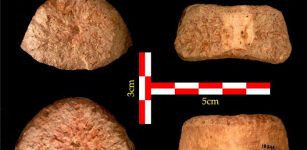 1.5 Million-Year-Old Human Vertebra Discovered In Israel’s Jordan Valley Sheds New Light On Migration From Africa To Eurasia
Archaeology | Feb 3, 2022
1.5 Million-Year-Old Human Vertebra Discovered In Israel’s Jordan Valley Sheds New Light On Migration From Africa To Eurasia
Archaeology | Feb 3, 2022 -
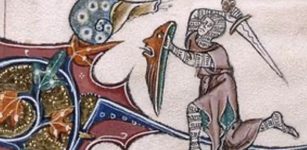 Why Are Medieval Manuscripts Full Of Doodles Of Snail Fights?
Featured Stories | Jun 17, 2023
Why Are Medieval Manuscripts Full Of Doodles Of Snail Fights?
Featured Stories | Jun 17, 2023 -
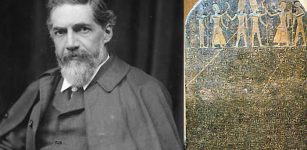 On This Day In History: Famous British Archaeologist And Egyptologist Sir Flinders Petrie Born – On June 3, 1853
News | Jun 3, 2016
On This Day In History: Famous British Archaeologist And Egyptologist Sir Flinders Petrie Born – On June 3, 1853
News | Jun 3, 2016 -
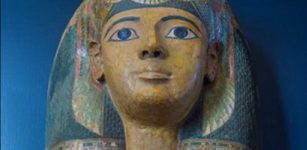 Ancient Egyptians Knowledge Of Psychiatry – Importance Of The Sorcerer And The Mysterious Zar Dance
Ancient History Facts | Apr 24, 2020
Ancient Egyptians Knowledge Of Psychiatry – Importance Of The Sorcerer And The Mysterious Zar Dance
Ancient History Facts | Apr 24, 2020 -
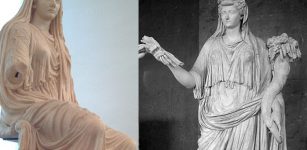 World’s First Diva Was Livia – Wife Of Emperor Augustus
Ancient History Facts | Aug 2, 2016
World’s First Diva Was Livia – Wife Of Emperor Augustus
Ancient History Facts | Aug 2, 2016 -
 Where Does The Expression ‘Saved By A Bell’ Come From?
Ancient History Facts | Oct 16, 2019
Where Does The Expression ‘Saved By A Bell’ Come From?
Ancient History Facts | Oct 16, 2019 -
 Yasuke – The First Black Samurai Caused A Sensation In Japan
Featured Stories | Oct 25, 2019
Yasuke – The First Black Samurai Caused A Sensation In Japan
Featured Stories | Oct 25, 2019 -
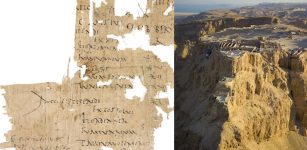 Rare Ancient Paycheck Of A Roman Legionary Soldier Found At Masada
Archaeology | Feb 16, 2023
Rare Ancient Paycheck Of A Roman Legionary Soldier Found At Masada
Archaeology | Feb 16, 2023 -
 Unique Maya Center Of Copán With History Recorded In 2500 Hieroglyphics
Civilizations | Nov 7, 2018
Unique Maya Center Of Copán With History Recorded In 2500 Hieroglyphics
Civilizations | Nov 7, 2018 -
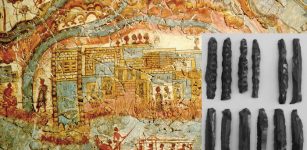 Analysis Of Ancient Tools Challenges Long-Held Ideas About What Drove Major Changes In Ancient Greek Society
Archaeology | Aug 23, 2022
Analysis Of Ancient Tools Challenges Long-Held Ideas About What Drove Major Changes In Ancient Greek Society
Archaeology | Aug 23, 2022 -
 Mysterious Underwater Ruins In Canada And America – Evidence Of An Unknown Ancient Civilization?
Civilizations | Sep 17, 2020
Mysterious Underwater Ruins In Canada And America – Evidence Of An Unknown Ancient Civilization?
Civilizations | Sep 17, 2020 -
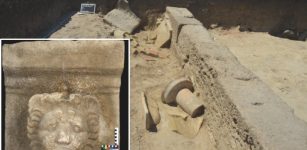 Outstanding Unfinished Ancient Marble Carving Of A Lion’s Head Found Near Selinunte, Sicily
Archaeology | Sep 2, 2023
Outstanding Unfinished Ancient Marble Carving Of A Lion’s Head Found Near Selinunte, Sicily
Archaeology | Sep 2, 2023 -
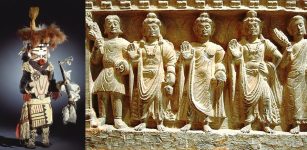 Mysterious Zuni Indians And Japanese People May Be Related – Did Buddhist Monks Reach North America In 1350?
Civilizations | Dec 26, 2017
Mysterious Zuni Indians And Japanese People May Be Related – Did Buddhist Monks Reach North America In 1350?
Civilizations | Dec 26, 2017 -
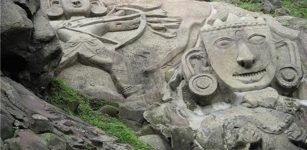 Mysterious Ancient Sculptures Of Unakoti And The Curse Of God Shiva
Featured Stories | Jul 18, 2017
Mysterious Ancient Sculptures Of Unakoti And The Curse Of God Shiva
Featured Stories | Jul 18, 2017 -
 Mysterious Ancient Egyptian Severed Hands Practice Investigated By Scientists
Archaeology | Apr 1, 2023
Mysterious Ancient Egyptian Severed Hands Practice Investigated By Scientists
Archaeology | Apr 1, 2023 -
 Strange 1,200-Year-Old Anglo-Saxon Artifact Used For Unknown Purpose Found In Norfolk, UK
Archaeology | Jan 18, 2024
Strange 1,200-Year-Old Anglo-Saxon Artifact Used For Unknown Purpose Found In Norfolk, UK
Archaeology | Jan 18, 2024 -
 Beautiful Legend Of The Christmas Rose – A Symbol Of Love And Hope
Christmas Traditions | Dec 26, 2024
Beautiful Legend Of The Christmas Rose – A Symbol Of Love And Hope
Christmas Traditions | Dec 26, 2024 -
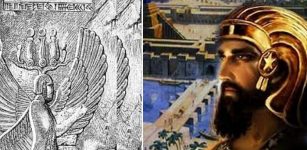 Cyrus The Great: Founder Of Achaemenid Empire Who Conquered Medians, Lydians And Babylonians
Featured Stories | Mar 21, 2019
Cyrus The Great: Founder Of Achaemenid Empire Who Conquered Medians, Lydians And Babylonians
Featured Stories | Mar 21, 2019

